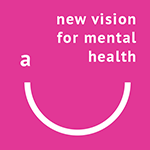This article, co-authored by Jules Pretty, Mike Rogerson and Jo Barton, has been published in the International Journal of Environmental Research and Public Health. The abstract says:
“We propose a Green Mind Theory (GMT) to link the human mind with the brain and body, and connect the body into natural and social environments. The processes are reciprocal: environments shape bodies, brains, and minds, minds change body behaviours that shape the external environment.
GMT offers routes to improved individual well-being whilst building towards greener economies. It builds upon research on green exercise and nature-based therapies, and draws on understanding derived from neuroscience and brain plasticity, spiritual and wisdom traditions, the lifeways of original cultures, and material consumption behaviours.
We set out a simple metaphor for brain function: a bottom brain stem that is fast-acting, involuntary, impulsive, and the driver of fight and flight behaviours, a top brain cortex that is slower, voluntary, the centre for learning, and the driver of rest and digest. The bottom brain reacts before thought and directs the sympathetic nervous system. The top brain is calming, directing the parasympathetic nervous system. Here, we call the top brain blue and the bottom brain red, too much red brain is bad for health.
In modern high-consumption economies, life has often come to be lived on red alert. An over-active red mode impacts the gastrointestinal, immune, cardiovascular, and endocrine systems. We develop our knowledge of nature-based interventions, and suggest a framework for the blue brain-red brain-green mind. We show how activities involving immersive-attention quieten internal chatter, how habits affect behaviours across the lifecourse, how long habits take to be formed and hard-wired into daily practice, the role of place making, and finally how green minds could foster prosocial and greener economies. We conclude with observations on twelve research priorities and health interventions, and ten calls to action.”
You can read the full article from here.




